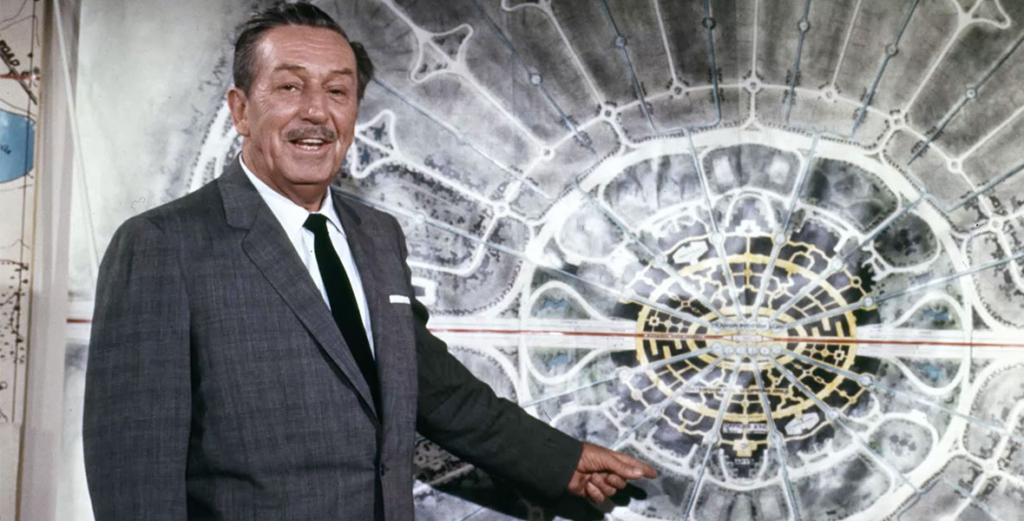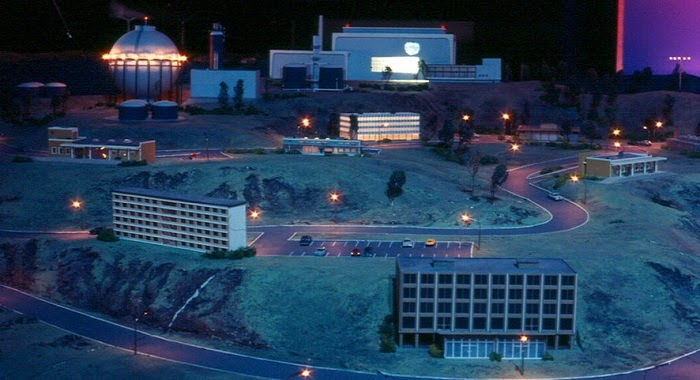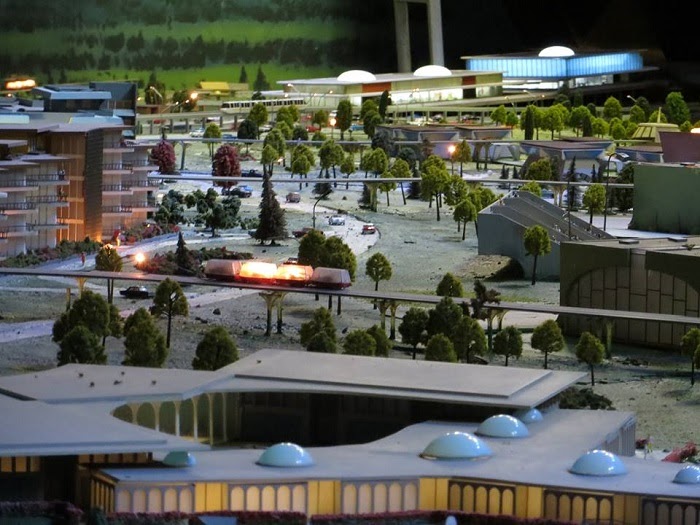Walt Disney And the Legacy of A Big American

UPDATE: The Florida House of Representatives has passed the repeal of Reedy Creek. It now goes to Governor DeSantis who is expected to sign it. Disney stock price has dropped again.
Ron DeSantis has called for a special session of the Florida legislature. There are a few things that are going to be presented at it but the one that everyone is talking about is dissolving all special tax districts created before 1969. That would cover the Reedy Creek Improvement District, better known as Walt Disney World.
If Reedy Creek is dissolved it will be a devastating financial blow to the Walt Disney company. Reedy Creek gives Disney the kind of special carve-outs that most companies can only dream about in 2022. Universal Parks and Sea World will be laughing their asses off and it will be an end of an era that started, not in 1967 in Florida but ten years before in California.
In 1957 Walt Disney was brokering the rescue of two Los Angles institutions that were in deep trouble, Chouinard Art Institute and the Los Angeles Conservatory of Music. Walt was combining them into a new institution that would become Cal Arts. But kit got him planning something much bigger called Seven Arts City. It would have been a combination of a college dedicated to the arts, a museum, a shopping center with fine dining available, and (this is the important part) a planned community. It was to be a city of art students and working artists. It would also be a showhouse for model homes like the Monsanto House of the Future.
Walt was in his late fifties and would become angry when people mentioned the subject of death in any circumstances to him. He was starting to worry constantly about what his legacy would be.
At this point, you have to take a look at who Walt Disney was, and what he wanted to be. He was first and foremost a product of the Midwest lower-middle class. He believed in America and the Big American. Men like Ford, Edison, and Carnegie. Nobody looked at their failings back then because no one wanted to, it wasn’t good for a society to create flaws in the pillars that were holding it up
He had been extremely interested in art when he was a boy, but his father had no use for his son’s talent despite the fact that even as a kid he was able to sell his work. His uncle Mike was a railroad engineer and Walt became fascinated with trains and indeed most things mechanical. He tried to fake his way into the Army in WWI but got DQ’ed due to his age. He drove an ambulance for the Red Cross instead. He was very close to his older brother Roy, whose lifelong job would become keeping Walt out of trouble.
Walt Disney had some amazing blind spots. He honestly believed that his biggest gift was being able to bring people together on a project. He felt he could do that because he always knew what was best for them.
By 1957 Walt knew at the back of his mind that there was more road behind him than in front of him. He had a public image as Uncle Walt the great American storyteller. He had gone from producer to minor studio mogul. Created the first full-length animated feature and made a fortune doing it. He had built the best amusement park in the country. And he was deeply insecure.
If you’ve been poor enough to know what it’s like to fear a knock at the door that will be someone who has a right to demand money you don’t have, then you will never feel rich no matter how much money you have.
The question that had started to gnaw on him like a starving dog with a meaty steak bone was, ‘is Uncle Walt all I will ever be?’
Imagine only being remembered for creating a mouse. – Walt Disney
Big Americans like Carnegie and Rockefeller left institutions behind them with their names plastered on them, not a weekly TV show. More and more, Walt Disney wanted his legacy as a Big American.
Seven Arts City was originally supposed to be that legacy, but it didn’t work out. That was the kind of setback he knew how to deal with, if something big failed then he would go BIGGER.
Disneyland had been a massive success however it had a major problem. While everyone wanted to go, not everyone could. This was circa 1960 and adjusted for this that and the other, the price of air travel from New York to Los Angeles for a family of four was equivalent to $5,000 today. While 2/3’s of America’s population was east of the Mississippi only 10% of that market even had the option of coming to the Happiest Place on Earth.
An east coast Magic Kingdom was a no-brainer.
One of the issues that Walt saw with Anaheim was that just outside Disneyland’s gate was mile after mile of cheap, sleazy ripoff businesses that he felt made his park look cheap just by being near it. It looked like the kind of carnival atmosphere he detested and wanted Disneyland to be no part of. And there he was surrounded by it.
He wanted a lot of land for his new park, enough that he could set up a major buffer zone between his new park and hucksters. You would be driving on Disney’s land for a while before you got near the front gate.
But he also needed that land for something else. Something much bigger. At the end of the day Disneyland East was an afterthought for him. He’d leave that to other men. He needed space for his dream city of the future. Seven Arts City had expanded in his mind to become the Experimental Prototype City Of Tomorrow.
EPCOT was to be Walt’s legacy.
His last years were an obsession with planning this city. And he needed control to bring his dream to life. Control of everything. Control of every aspect of its construction and of the lives of the people who would live in it. He knew he could bring it all together because that was his gift, he knew what was best for everyone.
Florida was only too happy to grant Reedy Creek to the Disney corporation. Orlando was geographically central to Florida but that was all it brought to the party, it was just swampland. The Florida legislature happily turned all planning authority over to the Reedy Creek Improvement District. Disney is the only company in America that can build a nuclear power plant if it feels like it.
As I said, Walt Disney needed control of the people who would live in it. Like anybody else, he could personally function well with about 150 people but beyond that number, people became sort of unreal to him. And a damn nuisance. A lot of the 1940 strike, he brought on himself. He was still trying to manage his company like there were only 150 people working at it instead of 1,200. He eventually solved his strike by firing half of his company.
Walt loved persons but couldn’t stand people.
This is kind of a drawback when you are building a city as it tends to be loaded with them.
I admit there was a grandeur to his dream. EPCOT was going to be a machine for living. That is probably the easiest way to think of it. It was a culmination of Walt’s interest in arts and mechanics.
New York City World’s Fair was where Disney World was born. Walt built pavilions for the biggest companies in America. Companies he knew he would need to help build EPCOT. He wanted them to build facilities in EPCOT and the staff would live there.
GE, Westinghouse, Monsanto, RCA, and some other American corporate tombstones like Kodak were interested. They would have factories at EPCOT and their workers would live in the residential section.
New York City planner Robert Moses was amazed by Disney’s plans for EPCOT. He thought Disney was going to create the first city free of pollution, noise, and traffic accidents.
The basic layout of the new city was supposed to be the world’s first jetport in the south, EPCOT in the middle, and the Magic Kingdom in the north. EPCOT itself was supposed to have a radial design with a central hub. Incoming traffic would be segregated with trucks on a lower road and personal vehicles on a higher road. But Walt didn’t want his residents to have cars so he was going to keep the cost as prohibitively expensive as possible. People would be getting around between the high-density housing and factories via People Movers. For that matter, people in the Monsanto Houses of Tomorrow wouldn’t be allowed to have cars either. The vague plan was for Tesla to import electric vehicles from 2020 and they would get rented out to the residents for weekend trips. No need for them in during the weekdays. Who would want to leave paradise?

There would be no retirees either. Employment was a requirement to maintain residence in EPCOT. A second community for retirees was projected for somewhere else eventually.
The city was to be built using the utilidors that were eventually used in the construction of Disney World’s Magic Kingdom. Since Reedy Creek is nothing but swamp you can’t really dig down at all without hitting water immediately. Consequently, EPCOT hub was going be, in effect a gigantic building.
At the center was the Cosmopolitan Hotel, going outward would be the restaurants and shopping district. The next ring out would be administration buildings, fire stations, stadiums, hospitals, post offices, libraries, museums, and of course a center for the arts. Tying it all together would be a communication system called WEDcom which would be something close to an analog internet.

The next ring out be a green belt with parks and playgrounds, churches and schools. Walt was also planning to change the education system completely. Getting rid of tests and replacing them with a gaming system.

The final ring would be the low-density housing, meaning the Houses of the Future. The residents would get to work by taking People Movers. No streets in these cul-de-sacs, although there would be almost no private lawn space either. All the green stuff was the property of EPCOT. The houses would be independently powered (no idea how). And all of them would be heavily automated. Trash cans were all connected to a vacuum system called AVAC. All the houses would have cable TV rather than ugly TV antennas.
EPCOT personnel could at any time enter the home for an inspection. Appliances would be replaced at EPCOT’s whim. And in a lot of ways, the residents would be on exhibit.
The problem of course was human beings. They would want to vote on things and select their own appliances and things like that. Walt would have none of it. EPCOT residents would have no right to vote in local matters.
Walt wanted EPCOT to be twenty-five years ahead of its time…forever. Both expensive and impossible.
In late 1966 Walt Disney was hospitalized and before the new year arrived Uncle Walt was dead at the age of 65.
Roy Disney looked over his brother’s plans and quietly closed the book on them. He spent the rest of his life building the new Magic Kingdom as a tribute to his brother. But not EPCOT.
Eventually, there was something called EPCOT that was built but it was more of a permanent world’s fair, albeit one that initially had a heavy emphasis on science.
The final legacy of Walt Disney to his company was the Reedy Creek Improvement District.
Right now, if Universal Orlando wants to build a new attraction, they have to seek many and numerous permits and permissions from Orange County, the City of Orlando, and who knows how many commissions. Disney World on the other hand just builds it. *
Disney World enjoys what is a more or less tax-free existence from the two counties it covers. And more importantly, it doesn’t have to deal with either one of them in any serious way. Having to deal with two counties at the same time is a nightmare for any corporation.
But the crippling blow to Disney will be losing its ability to issue municipal bonds. Walt Disney World has billions in untaxed municipal bond issues. It’s how they finance pretty much everything they built there. What happens to that debt if Reedy Creek is dissolved?. Disney will try to palm it off on the counties but those counties can now tax Disney World, to include back taxes. One way or another, Disney is absolutely on the hook for this.
It wouldn’t bankrupt the company, but it would kneecap it for decades. Its stock price wouldn’t recover for years.
This attack was so sudden I have to wonder, did Bob Chapek talk Ron DeSantis into it?
I have no doubt whatsoever that Bob Chapek is the one who leaked the Reimagine Tomorrow videos clips to Christopher Ruffo. He wants Reimagine Tomorrow destroyed. Right now, it’s protected by a Board of Directors but they will be facing a shareholder revolt if this thing trashes Disney’s stock price.
What would Chapek get out of this you wonder?
A hunting license with no bag limit. If Reedy Creek is dissolved he can go through Disney with a gutting knife.
Mark my words Peter Rice will be the first to be dressed out.
Okay, I’m done here.
*It’s a little more complicated than that but they absolutely have an unfair advantage over their local competitors

